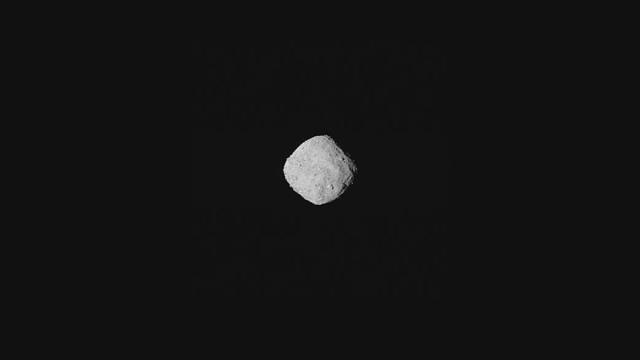More than two years after its launch, NASA’s OSIRIS-REx spacecraft has beamed back what the space agency is calling a “super-resolution” view of the asteroid Bennu. OSIRIS-REx is NASA’s exciting mission to near-Earth asteroid 101955 Bennu, which the spacecraft is set to reach in about a month, to collect and bring back a sample to help scientists better understand the origins of the Solar System.
The close-up of Bennu was created with a series of images taken on October 29 and shared by the space agency earlier this week. NASA used eight images snapped by the spacecraft from roughly 330km away to create a super-clear composite image.
“The spacecraft was moving as it captured the images with the PolyCam camera, and Bennu rotated 1.2 degrees during the nearly one minute that elapsed between the first and the last snapshot,” NASA said this week. “The team used a super-resolution algorithm to combine the eight images and produce a higher resolution view of the asteroid. Bennu occupies about 100 pixels and is oriented with its north pole at the top of the image.”
After having launched in September of 2016, the OSIRIS-REx spacecraft will finally reach Bennu in December. The OSIRIS-REx spacecraft carries a payload of five scientific instruments it will use to explore the asteroid. In addition to the mission’s goal of returning a pristine carbon-rich asteroid sample, OSIRIS-REx will also study the surface and composition of the asteroid, measure the effect of sunlight on its orbit, and document Bennu’s regolith, or the loose material covering its surface.
The spacecraft is expected to return its Bennu sample to earth in 2023.
According to researchers at the Instituto de Astrofísica de Canarias (IAC), which identifies itself as part of the imaging processing team working on the mission, this stunning view is just the start of some very exciting observations to come.
“In December 2018 we will start to obtain images with MapCam, also one of the cameras of the mission, using colour filters,” Javier Licandro, a researcher with IAC, said in a statement. “This will allow us to generate colour maps and to study the geographical distribution of different materials on Bennu, including silicates altered by the presence of liquid water.”
